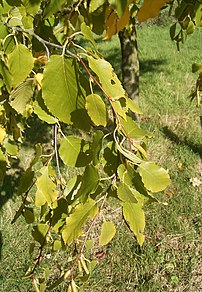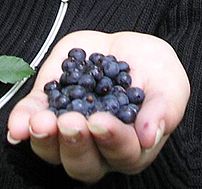[amazon_link asins=’B01J5Y9BG0,B07314T1Q5,B01DD2WQDU,B01J5Y7NZG,B016ISGKYW,B01J5YD2K6,B01FMPQ1QY,B01I0VMBU2,B06XX8TZRS’ template=’ProductCarousel’ store=’finmeacur-20′ marketplace=’US’ link_id=’2ece59d6-9d02-11e7-912f-9940bff0c176′]
Botanical Name : Betula alleghaniensis
Family : Betulaceae
Genus : Betula
Subgenus: Betulenta
Synonyms: Betula lutea – Michx.
Common Name : Yellow Birch
Kingdom: Plantae
Division: Magnoliophyta
Class: Magnoliopsida
Order: Fagales
Species: B. alleghaniensis
Habitat :Native to eastern North America, from Nova Scotia, New Brunswick, southern Québec and Ontario, and the sud- east corner of Manitoba in Canada, west to Minnesota, and south in the Appalachian Mountains to northern Georgia. North-eastern N. America – Newfoundland to Virginia and Tennessee. Usually found in moist well-drained soils in rich woodlands on lower slopes, it is also found in cool marshlands in the south of its range.
Description:
It is a medium-sized deciduous tree reaching 20 m tall (exceptionally to 30 m) with a trunk up to 80 cm diameter. The bark is smooth, yellow-bronze, flaking in fine horizontal strips, and often with small black marks and scars. The twigs, when scraped, have a slight scent of oil of wintergreen, though not as strongly so as the related Sweet Birch. The leaves are alternate, ovate, 6-12 cm long and 4-9 cm broad, with a finely serrated margin. The flowers are wind-pollinated catkins 3-6 cm long, the male catkins pendulous, the female catkins erect. The fruit, mature in fall, is composed of numerous tiny winged seeds packed between the catkin bracts.
CLICK & SEE THE PICTURES..
Leaves of Betula alleghaniensis are simple, alternate and doubly-toothed. The sap has the smell and taste of wintergreen. Mature trees of Betula alleghaniensis are unmistakeable by their papery, yellowish, often shiny bark, but seedlings and saplings can be more difficult to distinguish from other Betula species. As is the case with some other birches it tends to develop conspicuous spur branches (though not necessarily on sprouts and the fastest growing twigs).
Betula alleghaniensis is the provincial tree of Québec, where it is commonly called merisier, a name which in France is used for the wild cherry.
The name “yellow birch” reflects the color of the tree’s bark.
It is hardy to zone 4. It is in flower in April, and the seeds ripen in October. The flowers are monoecious (individual flowers are either male or female, but both sexes can be found on the same plant) and are pollinated by Wind.
The plant prefers light (sandy), medium (loamy) and heavy (clay) soils, requires well-drained soil and can grow in heavy clay soil. The plant prefers acid, neutral and basic (alkaline) soils. It can grow in semi-shade (light woodland) or no shade. It requires moist soil.
Cultivation :
Succeeds in a well-drained loamy soil in a sheltered position. Grows well in heavy clay soils. Dislikes wet soils[200]. Shade tolerant[200]. A slow-growing tree, it is relatively long-lived for a birch, with specimens 200 years old recorded. Plants often grow taller than the 12 metres mentioned above[229]. The trees are highly susceptible to forest fires, even when wet the bark is highly inflammable. The bruised foliage has a strong smell of wintergreen[200]. Hybridizes freely with other members of this genus. Trees are notably susceptible to honey fungus.
Propagation:
Seed – best sown as soon as it is ripe in a light position in a cold frame. Only just cover the seed and place the pot in a sunny position. Spring sown seed should be surface sown in a sunny position in a cold frame. If the germination is poor, raising the temperature by covering the seed with glass can help. When they are large enough to handle, prick the seedlings out into individual pots and grow them on in a cold frame for at least their first winter. Plant them out into their permanent positions in late spring or early summer, after the last expected frosts. If you have sufficient seed, it can be sown in an outdoor seedbed, either as soon as it is ripe or in the early spring – do not cover the spring sown seed. Grow the plants on in the seedbed for 2 years before planting them out into their permanent positions in the winter.
Edible Uses:
Edible Parts: Inner bark; Sap.
Edible Uses: Condiment; Sweetener; Tea.
Inner bark – cooked or dried and ground into a powder and used with cereals in making bread. Inner bark is generally only seen as a famine food, used when other forms of starch are not available or are in short supply. Sap – raw or cooked. A sweet flavour. The sap is harvested in early spring, before the leaves unfurl, by tapping the trunk. It flows abundantly, but the sugar content is much lower than maple sap. A pleasant drink, it can also be concentrated into a syrup or fermented into a beer. An old English recipe for the beer is as follows:- “To every Gallon of Birch-water put a quart of Honey, well stirr’d together; then boil it almost an hour with a few Cloves, and a little Limon-peel, keeping it well scumm’d. When it is sufficiently boil’d, and become cold, add to it three or four Spoonfuls of good Ale to make it work…and when the Test begins to settle, bottle it up . . . it is gentle, and very harmless in operation within the body, and exceedingly sharpens the Appetite, being drunk ante pastum.”. A tea is made from the twigs and leaves. The dried leaves are used according to another report. An excellent flavour. The twigs and leaves have the flavour of wintergreen and can be used as condiments.
Medicinal Actions & Uses:
Cathartic; Emetic.
Yellow birch is little used medicinally, though a decoction of the bark has been used by the native North American Indians as a blood purifier, acting to cleanse the body by its emetic and cathartic properties. The bark is a source of ‘Oil of Wintergreen’. This does have medicinal properties, though it is mainly used as a flavouring in medicines[2.
Other Uses:
Containers; Fuel; Waterproofing; Wood.
The bark is waterproof and has been used by native peoples as the outer skin of canoes, as roofing material on dwellings and to make containers such as buckets, baskets and dishes. Wood – close-grained, very strong, hard, heavy. The wood is too dense to float. An important source of hardwood lumber, it is used for furniture, boxes, tubs of wheels, floors etc. It is also often used as a fuel.
The wood of Betula alleghaniensis is extensively used for flooring, cabinetry and toothpicks. Most wood sold as birch in North America is from this tree. Several species of Lepidoptera use the species as a food plant for their caterpillars. See List of Lepidoptera that feed on birches.
Scented Plants
Leaves: Crushed
The bruised foliage has a strong smell of wintergreen.
Disclaimer:The information presented herein is intended for educational purposes only. Individual results may vary, and before using any supplements, it is always advisable to consult with your own health care provider.
Resources:
http://www.pfaf.org/database/plants.php?Betula+alleghaniensis
http://en.wikipedia.org/wiki/Betula_alleghaniensis
http://www.uwgb.edu/biodiversity/herbarium/trees/betall01.htm
![Reblog this post [with Zemanta]](https://i0.wp.com/img.zemanta.com/reblog_e.png?w=580)





































